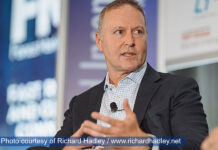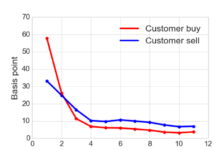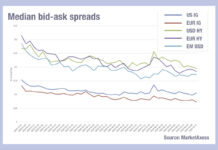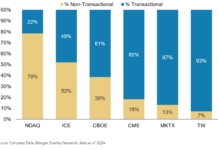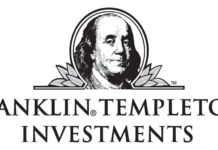A new report from Coalition Greenwich outlines the trends set to define markets in 2024, with insights gleaned from clients and ongoing research.
Dan Connell, Kevin McPartland, Audrey Blater, Stephen Bruel, David Easthope, Jesse Forster and Brad Tingley, who all advise on market structure and technology globally, set forth the trends they believe will be front and centre in the year ahead.

“Markets are still looking for their new normal. Good news is bad news until it’s good again. Oscillations between bull and bear markets happen frequently and often defy conventional wisdom. The 60/40 portfolio died but came back to life just as quickly. And the Fed/inflation/QE/QT/rate rise/rate pause/rate cut conversation feels never-ending and increasingly tedious,” the report states.
Gary Gensler
SEC chair Gary Gensler, in the role since 2021, faces an uncertain future given the looming presidential election in November this year. If a Republican moves into the White House, Gensler is likely to be replaced by a nominee from that party.
Given the length of his tenure is unknown, Gensler may elect to push through “aggressive” reforms, the report suggests. Alternatively, if victory seems a likely prospect for Democrats, Gensler may bide his time and build consensus around his proposals.
AI
While the use cases for AI and generative AI are numerous within capital markets, this year the ability to search through complex datasets and huge databases by simply telling the computer what you want will be the ‘killer app’.
“Data availability in financial markets has grown at an exponential rate, ever since the internet found its way onto trading desks. But with the volume of data has come overly complex search tools with so many filters you need a search engine to search the filters. Generative AI is already changing that,” the report states.
Exchange diversification
Exchanges shifting away from matching buyers and sellers continues unabated, with non-exchange trading venues also diversifying their revenue streams, the report finds.
They write, “LSEG is now a global data powerhouse. ICE is modernising the US mortgage market. Nasdaq is in the risk management business. MarketAxess and Tradeweb both bought algo providers. And those are only a few examples, each dramatically oversimplifying the transformation.”
It is expected the coming year will bring more mergers. Unique data, analytics and workflow tools are all industry growth areas and consolidating liquidity in competitive markets like stocks, options and bonds makes good financial sense.
“We fully expect the global exchange groups and non-exchange trading venues alike to seek out new asset classes where e-trading is either emerging or could in time meet the criteria for electronification,” the report says.
Private markets
Although private markets are characterised by the notion that nonbanks provide capital, developments in fintech, distributed ledger technology (DLT), and the rise of ETF and mutual fund providers have increased private market access for retail investors.
Banks are also looking for a piece of the action, the report states. In 2024, banks will increasingly be putting money in private credit funds at nonbanks that then lend that money to corporations, showing that banks have found a way into a market that has, until now, excluded them.
Workflow automation
There will be an increased focus on the middle and back office as automating workflows driven by industry initiatives such as Central Securities Depository Regulation (CSDR), Uncleared Margin Rules (UMR), and the shortened settlement cycle in the US drive the need for operational efficiency.
“But the focus on post-trade workflow automation is not simply tactical compliance, it is also a recognition that operational automation can support profit growth,” the report states.
Application programming interface (APIs), middleware and distributed ledger technology have all played a part in operational redesigns. Not only are these ways to reduce people costs, but also ways to better manage risk and improve front-office performance.
Crypto
Despite reduced retail and financial advisor interest in trading and investing in crypto, the adoption of blockchain technology continues in capital markets. While corporate and government bonds “on chain” represent a small portion of the traditional market, that small portion is growing. Traditional financial institutions, often perceived as slow to adopt innovations, are now making decisive moves into production beyond proofs of concept (POCs), pilots and sandboxes.
“These are signals that a significant turning point is coming, emphasising that tokenising financial assets extends far beyond real estate, art, venture capital, and private equity. The centre of gravity may not ultimately be New York or London as places like Singapore and Switzerland race ahead while regulators in the US and UK leave potential market participants in search of clarity.
Clearing
Recent market upheavals have brought clearing into the spotlight. FX derivatives, US Treasuries and repo transactions will all see more clearing going forward, the report suggests.
The SEC recently announced it will require more US Treasury and repo trades to clear. “Reducing counterparty risk for swaps contracts is a no-brainer. Bilateral exposure to another counterparty can last years. Repo trades are, by definition, short term, so they carry less counterparty risk than swaps, but the market’s importance is so great that streamlining the plumbing via central clearing is generally supported by most market participants.”
For the Treasury market, the benefits are less obvious with counterparty exposure being minimal given the lack of leverage, trade netting and one-day settlement. Nevertheless, Treasury clearing mandates will take effect in 2026 and, if all goes well, market participation and transparency will grow, creating the long-term return on investment (ROI) the SEC is hoping for.
T+1 (+T+0)
The upcoming move to T+1 settlement for US securities has already ignited discussions about the feasibility of shortening the cycle even further to same-day settlement. Though the industry has good form in shortening settlements, the movement toward T+1 is already a significant undertaking. It remains to be seen whether markets are prepared for an even shorter settlement cycle that would present significant challenges that demand careful consideration before becoming a viable reality.
“Today’s technology makes many things possible that aren’t a good idea, and T+0—at least for now—is one of them.”
The focus for the foreseeable future should be on successfully implementing T+1 and thoroughly evaluating its impact on the markets. When T+1 is firmly established, regulators and industry participants alike can look forward to the next phases of market efficiency.
Cheap capital
The SVB failure and Basel III endgame on top of existing capital rules mean that banks hoping for capital relief are out of luck. The buy side will see impacts too. The higher cost of capital may force banks to remediate some relationships, incorporate capital charges into pricing and encourage their clients to trade in a more capital-sensitive manner. Further, banks will likely reconsider their position in balance-sheet intensive businesses and potentially exit some vital to the financial markets as a whole.
The end result, the report suggests, is set to be rather nuanced and bring with it some positive change. Banks will put even more effort into building and buying technology that helps them optimise capital usage in real time. This could eventually help clients access the risk exposure they need more cheaply, with banks incentivised to show their true costs for each trade.
Buy, build and integrate
The ‘buy, build and integrate’ approach has gained traction as both buy- and sell-side firms combine pre-built platforms with proprietary technology systems. This approach provides a middle ground, leveraging a pre-built foundation that can be expanded and tailored through additional development or integration with internal systems. It grants firms greater control, flexibility and adaptability while reducing development time and costs.
However, factors such as integration ease and reliability of these hybrid systems are gaining more importance, while successful providers prioritise ease-of-use, scalability, customisation, comprehensive training, and high-quality support. “Collaboration and customer-focused approaches will continue to be essential for building long-term relationships and unlocking growth opportunities.”
© Markets Media Europe 2023

